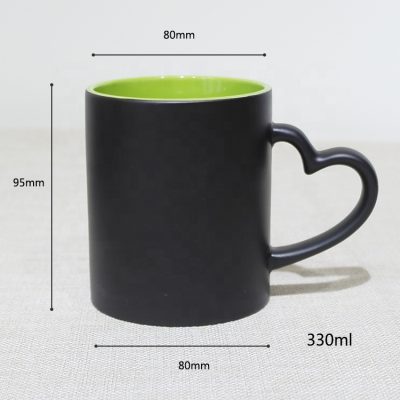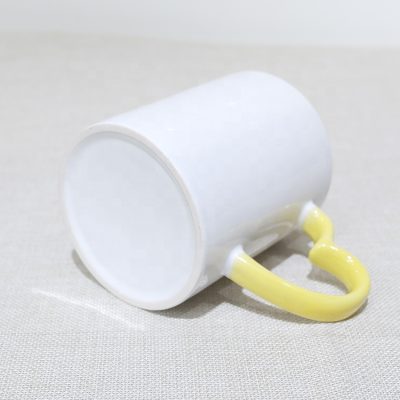There are two ways to make glaze for ceramic cups: one is to mix the soil or rocks as they are. Another method is to mix soil or rock to melt it with fire, and then suddenly cool it to make glass, called “frit”. The glaze made in this way should be broken into fine powder and mixed with water to make it a viscous juice for hanging. If the paste is not viscous enough to adhere to the blank, dextrin, glycerin or other viscous organic substances, such as kelp paste, can be mixed into the paste. Some green bodies are glazed immediately after drying in the open air, but some are pre-calcined at a low temperature of 800~900 ℃, that is, the so-called biscuit-fired glazes.
The former method is called “green glaze hanging”, which is widely used in my country. Foreign porcelain generally uses the so-called “bisque firing” method. Therefore, to identify a piece of porcelain, first of all, if it is hung or unglazed, you can roughly know whether it is made in China or abroad. However, this can only be used as a more convenient clue, which is of course familiar to people who are generally proficient in ceramics. Some Japanese imitations of Chinese ancient porcelain are deliberately made to make people think that they are alive and hanging.
When hanging the glaze, if the blank is fired, it is usually put into the prepared glaze juice and lifted immediately, so that the glaze will be absorbed on the surface of the blank, and it will be as smooth as if it was painted with a brush or a pen. If it is a tea bowl, it is necessary to quickly put the bowl into the glaze, and rush up and down two or three times, which is called “dipping the glaze method”. If it is a huge object, you can use something like a ladle to hold the glaze and hang it from the surrounding, which is generally called the “glazing method” or “slip glaze method”.
When the green body is glazed, if the glaze is hung inside and outside at one time, it is easy to damage the green body, so it is necessary to inject glaze inside and rotate it, and then dip or hang it outside after drying. There are also brushes and pens for painting and hanging. This method is mostly used for color glazes. For example, in the blue and white wares of the early Ming Dynasty, brush patterns often appeared in the feet. It can be seen that this method has been used. In addition, although there is a method of “spraying and hanging”, it is mainly used on large or thin utensils. For example, the so-called “reborn ware” seems to be able to see through the thin porcelain, and there is no other method of hanging glaze except this method. This method is: spray glaze on the inside first, thin the outer body after drying, and then spray glaze on the outside. For example, the works of the famous Jiaotan kiln in the Song Dynasty had thin blanks and thick glazes, and even the thickness of the glazes was about one to three times that of the blanks. If you look closely at the fragments of these works, it is obvious that there are two to three layers of glaze, so this kind of porcelain probably uses the spray hanging method. Another example is the peach blossom red in the Kangxi era, which is different from the Langyao red. According to the letter of the famous Dan Teker who lived in Jingdezhen at that time, it was also made by “spraying glaze”.
When the glazed ceramic body is calcined in the kiln, the water and other volatiles contained in the body and the kiln need to be dissipated and begin to shrink, and at the same time, the body is heated and thermally expanded. When a certain temperature is reached, a part of the components in the green body begin to melt and generate liquid to fill the pores in the green body and shrink again. The glaze also undergoes thermal expansion and contraction. When the shrinkage of the glaze is larger than that of the blank, cracks will appear on the glaze, and when the shrinkage of the glaze is smaller than that of the blank, it is easy to cause “deglazing”. Some volatiles only start to volatilize when the temperature is high. In order to prevent the gas from escaping after the glaze is melted and bubbles are generated, the temperature of the kiln should not be rapidly increased before the glaze starts to melt, but should be calcined slowly until the gas is released. After the gas is exhausted, the temperature is increased until the glaze is completely melted. If the temperature is too fast at this time, it is easy to produce blank bubbles or glaze bubbles.







